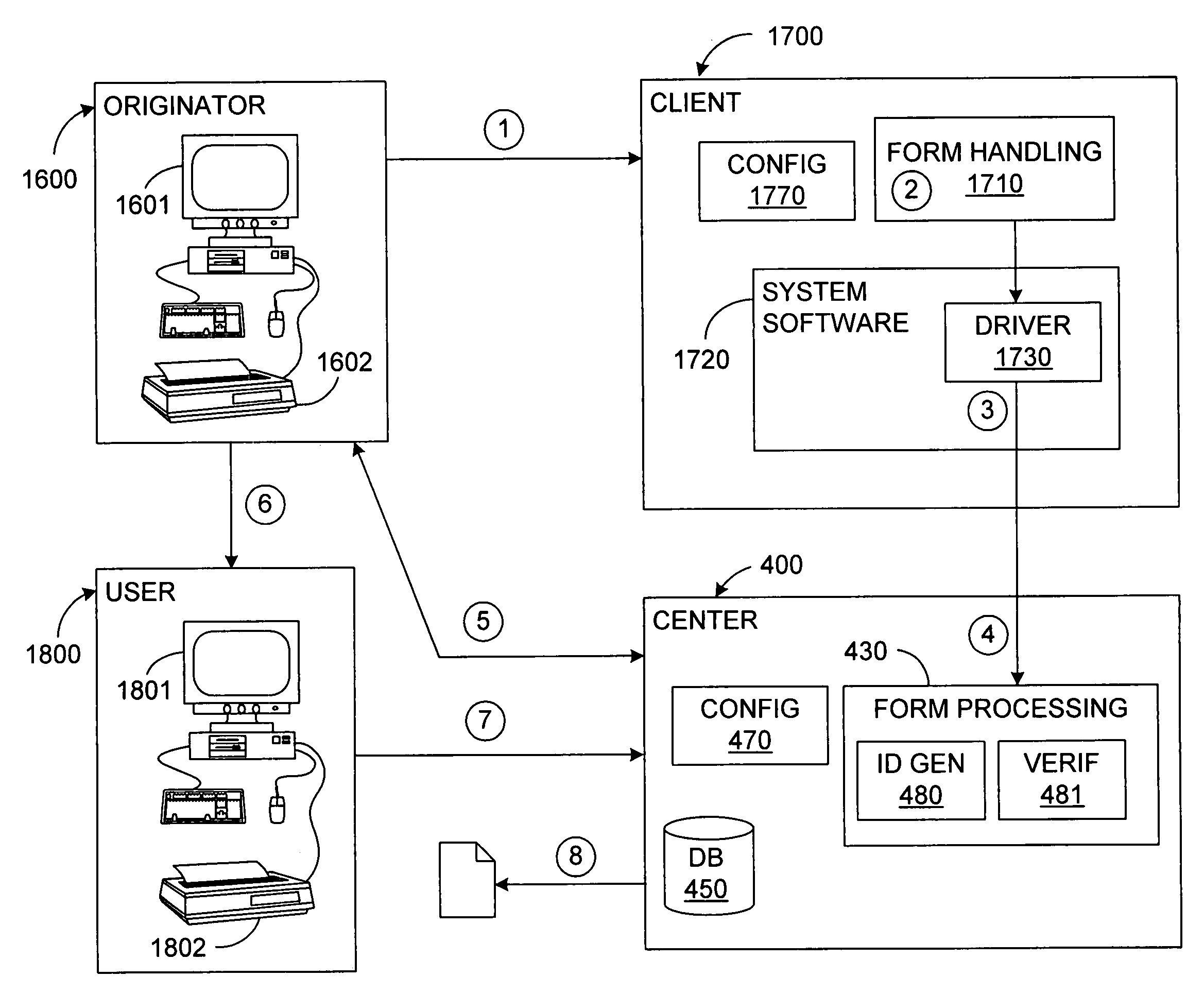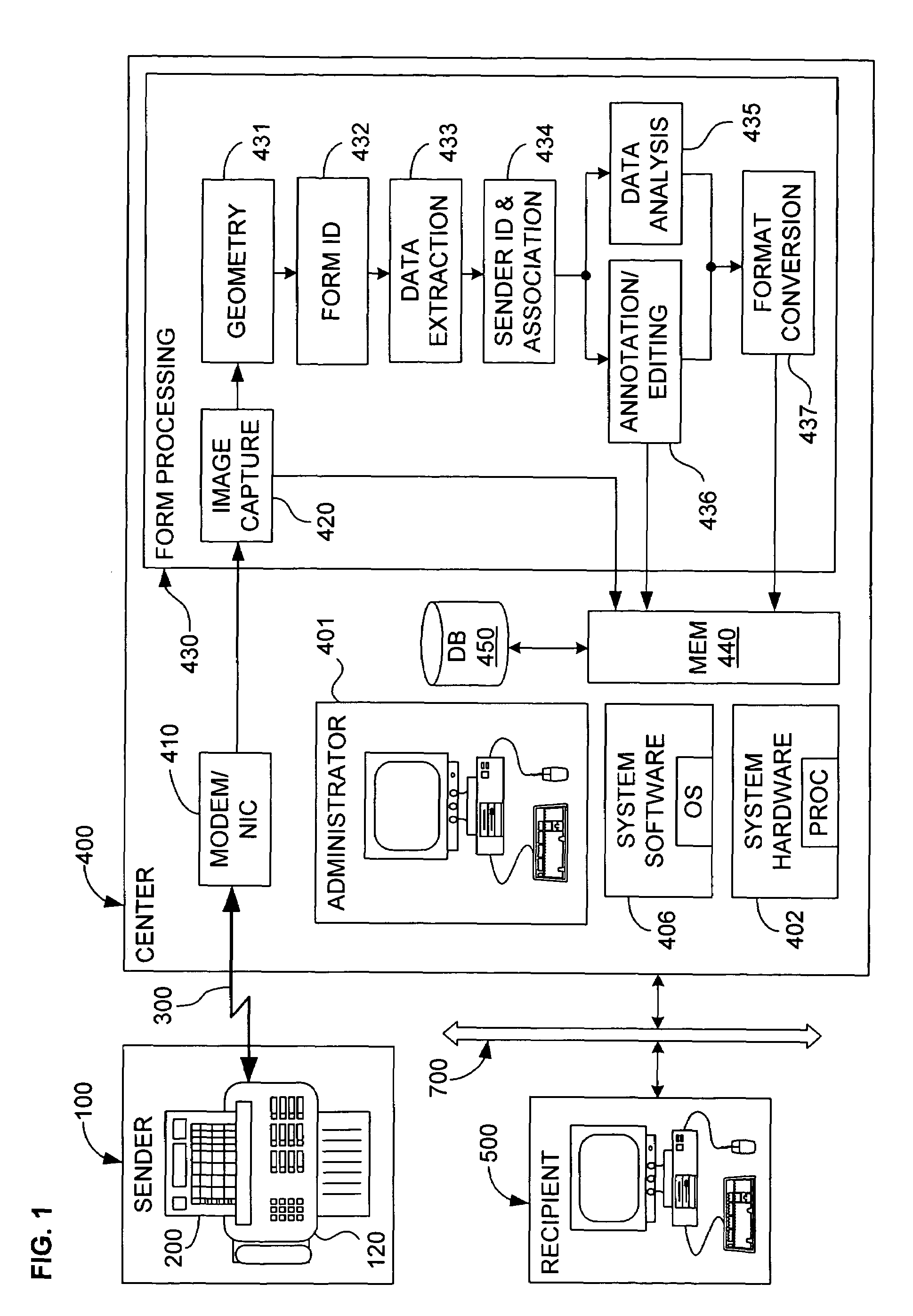System and method for remote, automatic reporting and verification of forms
a technology of automatic reporting and verification, applied in the field of remote, automatic reporting and verification of forms, can solve the problems of simple errors, misinterpretation, and confusion of conventional processes, and achieve the effect of reducing the risk of misinterpretation, simple typing errors, and avoiding misinterpretation
- Summary
- Abstract
- Description
- Claims
- Application Information
AI Technical Summary
Benefits of technology
Problems solved by technology
Method used
Image
Examples
Embodiment Construction
[0029]FIG. 1 is a block diagram of the main hardware and software components used for data capture from a paper form in a basic embodiment of the invention. In this embodiment, it is assumed that a sender 100 is to transmit some kind of report to a central system 400 (“central server” or simply “center”). The sender does this by recording the information to be reported on a form 200, which is then sent using a transmission device 120, via a channel 300 to the central system 400. Upon receiving the transmitted form, the center then processes it in order to extract the data from the form and, after optional further processing, store it in a storage system, a data base 450, etc. Before the individual hardware and software components of the invention are discussed in greater detail, these terms and concepts are first explained.
[0030]The sender 100—also referred to here the user—will be any person or group that needs to report information, submit a form, etc. to either the center 400 or ...
PUM
 Login to View More
Login to View More Abstract
Description
Claims
Application Information
 Login to View More
Login to View More - R&D
- Intellectual Property
- Life Sciences
- Materials
- Tech Scout
- Unparalleled Data Quality
- Higher Quality Content
- 60% Fewer Hallucinations
Browse by: Latest US Patents, China's latest patents, Technical Efficacy Thesaurus, Application Domain, Technology Topic, Popular Technical Reports.
© 2025 PatSnap. All rights reserved.Legal|Privacy policy|Modern Slavery Act Transparency Statement|Sitemap|About US| Contact US: help@patsnap.com



